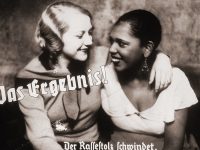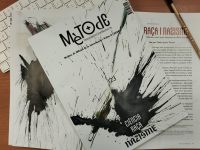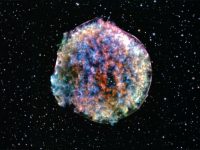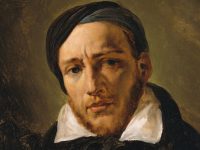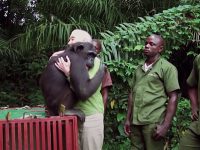Destroyed research in Nazi Vienna
The tragic fate of the Institute for Experimental Biology in Austria
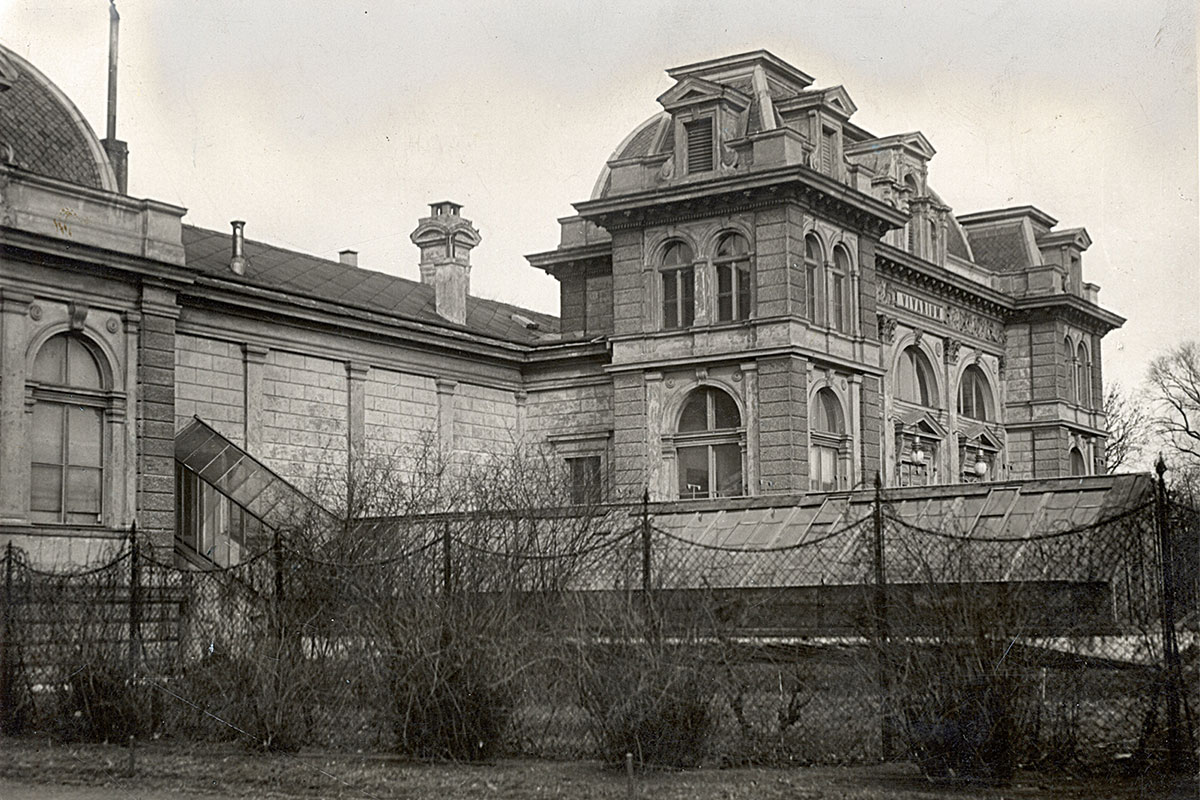
Relative to its size, no scientific institute was hit harder by National Socialism than Vienna’s Institute for Experimental Biology (Biologische Versuchsanstalt, BVA). Of the 33 collaborators before March 1938, 18 were expelled immediately after the Anschluss for racist reasons. Among them were two of the three founders and sponsors, zoologist Hans Przibram and botanist Leopold von Portheim. Seven members of the BVA were killed in the Holocaust, including Przibram. The building was destroyed by fire during the last days of the war. Afterwards the Institute remained forgotten and suppressed. It took more than 75 years after Austria’s annexation, before the Academy of Sciences – from 1914 to 1945 owner of the BVA – acknowledged the tragic history of the Institute.
Keywords: National Socialism, history of biology, Vienna, Hans Przibram, Holocaust.
«The Institute for Experimental Biology of Vienna was made into a sort of “breeding ground” of modern biology and a model for other research institutes»
Until 2015 it was only a street name in Vienna that vaguely recalled the existence of a research facility that wrote biological history in the first decades of the twentieth century. Vivariumstrasse in the Prater – the famous amusement-park in Austria’s capital – was named after the magnificent Renaissance-style building which had been built for the Vienna World’s Fair in 1873 and which was destroyed by incendiary bombs on 11 April 1945, during the last days of the war in Austria. In the years before this Institute was, relative to its size, hit harder by National Socialism than any other scientific Institute in Germany and Nazi-occupied countries.
Functioning initially as an aquarium and known by the public as «the Vivarium», it housed many zoological exhibition projects which by the year 1901 had come to nothing. In 1902 three young and wealthy biologists from the Jewish bourgeoisie purchased the building: the zoologist Hans Przibram, just 28 years old, and the botanists Wilhelm Figdor and Leopold von Portheim, both in their thirties. These three men invested quite a lot of their own money to transform the building into a private research institute and named it programmatically Institute for Experimental Biology (Biologische Versuchsanstalt, in short: BVA).
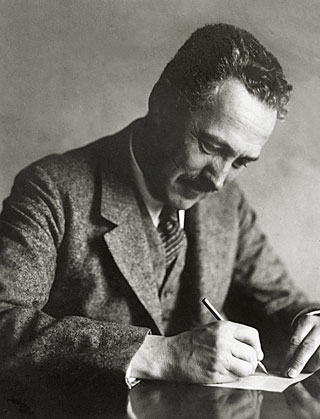
The founder, financier and director of the Institute for Experimental Biology, Hans Przibram, in 1924 on the occasion of his 50th birthday. / Eisert Family Archive
In subsequent years Przibram managed to transform it into one of the leading research centers for experimental biology in the world. Equipped with what was, at that time, state-of-the-art laboratory infrastructure – such as new types of temperature chambers – the researchers were attempting to answer major biological questions by means of experiment, just as in chemistry and physics. In so doing, they made the Institute for Experimental Biology into a sort of «breeding ground» of modern biology and a model for research institutes from New York to Moscow. Not only the infrastructure, but also the organization of the research was highly innovative: Scholars from different disciplines worked together, and laboratory facilities were made available to a constant stream of colleagues from Austria and other countries. Many doctoral theses by students at the University of Vienna – including in 1910 that of the later Nobel Prize winner Karl von Frisch – were written at the Institute for Experimental Biology supervised by Hans Przibram (Logan & Brauckmann, 2015; Müller, 2017; Reiter, 1999).
Two famed and controversial scientists
The perhaps most famous research known today to be conducted at the Institute for Experimental Biology were the spectacular breeding experiments by the eccentric zoologist Paul Kammerer, the first employee of the BVA. The zoologist, who was rediscovered recently by epigeneticists, attempted to demonstrate the heritability of acquired characteristics in amphibians, but also carried out important work on the mutability of sex characteristics, and the significance of cooperation in evolution. Kammerer committed suicide in the year 1926 following accusations of having faked his specimen. The scandal shook the scientific world, was covered by newspapers around the globe and even led to both a drama and movie named Salamandra, written by Anatoly Lunacharsky, the Soviet commissioner for culture and scientific affairs (Gliboff, 2006; Hirschmüller, 1991; Koestler, 1971; Taschwer, 2016).
The physiologist Eugen Steinach has also recently been rediscovered. From 1912 onwards he headed his own department in the Institute for Experimental Biology and was a pioneer in hormone research. Steinach, who was nominated for the Nobel Prize five times, became world-famous for his hormone therapies and his anti-aging operation, which Sigmund Freud, among others, underwent. «To be steinached» was a common expression in the 1920s and became so well-known even in English that newspapers in the USA used it without further explanation (Logan, 2013; Södersten, Crews, Logan, & Soukup, 2013; Walch, 2016).
«After World War I the Institute suffered not only from the difficult economic conditions but also from the growing anti-Semitism»
Many other researchers including an exceptionally high number of female scientists also contributed to the high regard in which the Institute for Experimental Biology was held. In order to safeguard the existence of their private institute in the medium term, the three founders donated their unique facility to the Academy of Sciences in 1914 after long-drawn-out negotiations. Moreover, Przibram, Von Portheim, and Figdor, together with Przibram’s brother Karl, supplied 300,000 Kronen to establish a foundation, a sum equivalent to over two million Euros today. After World War I the institute suffered not only from the difficult economic conditions but also from the growing anti-Semitism at the University of Vienna and at the Academy. Paul Kammerer, for example, was refused the title of extraordinary professor in 1918/19 and thus abandoned his university career.
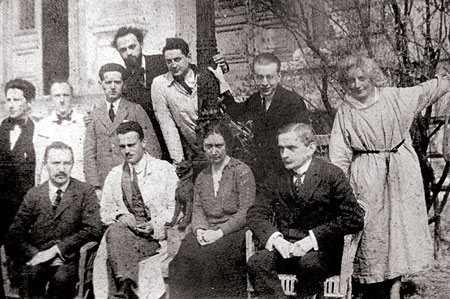
The Institute for Experimental Biology team in 1923. Seated from the left: Hans Przibram, his assistants Paul Weiss and Leonore Brecher, both of whom failed to reach the Habilitationsnorm – the standard for university teaching – in 1926, and Leopold von Portheim. Standing from the right: Auguste Jellinek and Theodor Koppanyi. Like Weiss, both also emigrated to the USA. / Eisert Family Archive
Failed careers at the university
Kammerer’s main opponent at the University of Vienna was the paleo-biologist Othenio Abel, who founded a secret group of anti-Semitic professors called Bärenhöhle (“bear cave”) around the year 1921 to exclude «Jewish» academics from careers at the University (Taschwer, 2015, pp. 99–132). In 1926 Abel and his gang prevented the habilitation of Hans Przibram’s closest collaborators, namely the zoologist Leonore Brecher and her colleague Paul Weiss, who both subsequently left Austria. Weiss should become a famous biologist in the USA, whereas Brecher returned to Austria later on. Przibram himself, who was extraordinary professor, had no chance of obtaining one of the two vacant full professorships after 1925 despite his impressive scientific achievements. Many coincidences indicate that the manipulation of Paul Kammerer’s specimen – the scandal that had shaken the scientific world in 1926 – was instigated by Othenio Abel to discredit the BVA and its Jewish collaborators to support the academic discrimination of Przibram, Brecher and Weiss (Taschwer, 2016, pp. 264–279).
In spite of the adverse circumstances and the lack of support from the Academy – Przibram was in a weak position within the University and was not a member of the Academy – he managed to keep the research quite flourishing, although restricted by the poor economic and political circumstances. Especially the Kammerer affair, which made news all around the globe, hit the Institute quite hard. Nevertheless, more than 600 papers, some of them of book length, had come out of the institute’s zoological laboratories until 1938, no including those by the botanists and Steinach’s department. And around 500 local and foreign researchers (around a quarter of them women) had been working at the BVA, either unpaid or funded almost exclusively from external sources (Logan & Brauckmann, 2016, p. 218).
«Przibram and Von Portheim, who had managed the BVA for over 35 years and had donated it to the Academy, were no longer able to enter their institute»
The institute after the Anschluss
With the Anschluss – Germany’s annexation of Austria in March 1938 – came the onset of tragedy for the 35-year-old Institute for Experimental Biology and of Austria’s science in general. Especially in Vienna, academic life was hit harder by National Socialism than in any other city in Germany due to the high numbers of scientists of Jewish origins. At the University of Vienna, after the Anschluss led by Nazi rector Fritz Knoll, 252 professors and lecturers (more than 30 % of the scientific staff) had to take leave on 22 April 1938, less than six weeks after the National Socialist take-over on 12 March 1938. This anti-Semitic cleansing is unique: At no other university have so many scientists been dismissed for racist and – to a lesser extent – for political reasons in such a short time.
While the Academy’s Presiding Committee, mostly consisting of anti-Semitic professors by the University of Vienna, carried out its exclusion of members for political and «racial» reasons after March 1938 in a bureaucratic fashion, its attitude toward the Institute for Experimental Biology was quite the opposite. The first act of destruction was executed with military precision. The main parties responsible were Franz Köck, who had been employed only as a specialist for the technical apparatus and botanist and rector Fritz Knoll, who had become head of the scientific advisory board of the BVA. Nazi-sympathizer Köck claimed a leading position for himself under the new political regime, and already on 17 March he declared the conditional closure of the institute as well as preparations for its reorganization. Of the 33 collaborators in March 1938, 18 were of Jewish descent. They were all required to leave the Institute for Experimental Biology immediately; five researchers left «voluntarily» in March 1938. This meant that the institute lost all of its department heads and two-thirds of its staff within a few weeks (Taschwer, Feichtinger, Sienell, & Uhl, 2016, p. 52).
On 4 April 1938 Fritz Knoll ordered Party comrade University Professor Dr. Victor Junk, actuary of the Academy of Sciences, to take over as signatory for the fund of the Institute for Experimental Biology. «The former signatories Univ.Prof. Hans Przibram and Leopold von Portheim are hereby relieved of their signing authority», as Knoll put it. The next day Köck was officially confirmed as sub-authorized agent for the Institute for Experimental Biology. And on 13 April 1938, a month and a day after the Anschluss, the Academy direction issued an order signed by Knoll and the designated Academy President Heinrich Srbik. Its cynicism is appalling (as cited in Reiter, 1999, p. 610):
The Institute for Experimental Biology is to be closed from 6 p.m. this day for cleaning work that cannot be delayed and will remain closed until 25 April. At 8 a.m. on 26 April the Institute will be reopened to those members of staff who have applied for and been issued passes. the work places are to be left in proper condition by 6 p.m. today. Temporary passes, which may be revoked at any time, will be issued for work that cannot be postponed (care of animals, final work, etc.)
From this time at the latest, Hans Przibram and Leopold von Portheim, who had managed the institute for over 35 years and had donated it to the Academy, were no longer able to enter their institute (Wilhelm Figdor had left the institute earlier and died in January 1938). Przibram also had to abandon his private library and other personal belongings such as his most valuable microscopes. Eugen Steinach, head of the physiology department, was on a lecture tour abroad in March 1938 when this happened – and shortly before his villa near the BVA was «aryanized». Steinach never returned to Austria. He spent his last years in Switzerland and died in 1944. Before his death his wife had committed suicide in exile.
Egon Schweidler, Secretary General of the Academy, described the situation in his report for 1938 in somewhat less dramatic terms: «The Institute for Experimental Biology in the Prater is in the process of reorganization in terms both of the design of the building and improvements to the interior fittings, and the organization of its scientific activities» (Taschwer et al., 2016, p. 52). Köck formulated it more explicitly on 4 May 1940 in a letter to a Nazi-official:
The Jews were removed after the changeover and where money from the Institute for Experimental Biology (private and state) was being used for the personal work of the Jews, Aryans were paid with this money; Aryans being paid with this money remained in the Institute for Experimental Biology. This was done so that the experience gained through years of the scientific work would not be lost. (Köck, 1940)
The tragic fate of the researchers
While the «Aryanization» of the funds was successful, the continuation of research work was a disaster. The only serious researcher to continue to work for a short time at the Institute for Experimental Biology after the Anschluss was the botanist Josef Kisser. Köck’s own research, which consisted mainly of mixing sawdust with bran and testing this for use as livestock feed, proved to be nonsense. Among other things, his Nazi contacts had also enabled him to utilize Jewish forced laborers for BVA purposes. Following numerous complaints and accusations against Köck, Knoll himself was appointed as new responsible for the Institute for Experimental Biology on 8 November 1939. Köck was let go in autumn 1940, but not before he had brought about the destruction of the ponds and terraria, the closure of parts of the scientific collection and several showcases, and changes to the gardens, in short: «severe injury to the value of the institute», as an internal report put it.
But what happened to the former employees of the institute? Leopold von Portheim and his wife escaped to England in 1938, whereas Hans Przibram had to stay in Vienna as Nazis tried to get more money from what was left from his belongings. Also the director of the Institute for Experimental Biology appears to have underestimated the dangers posed by the Nazis. Before war broke out, he finally was able to flee to the Netherlands with his wife. Przibram had received an invitation for the United States, probably from his former student Paul Weiss, but at first he didn’t want to leave without his wife. In spring of 1940 the Netherlands were occupied by German troops: Przibram and his wife were trapped again. On 3 March 1941, the biologist asked Fritz Knoll for a letter of support for his planned emigration from Amsterdam to the United States. The letter by Knoll was recommending permission, but for a final decision the entire file was sent to the Reich Ministry of Science, Education, and Culture in Berlin, effectively invalidating the letter from Vienna.
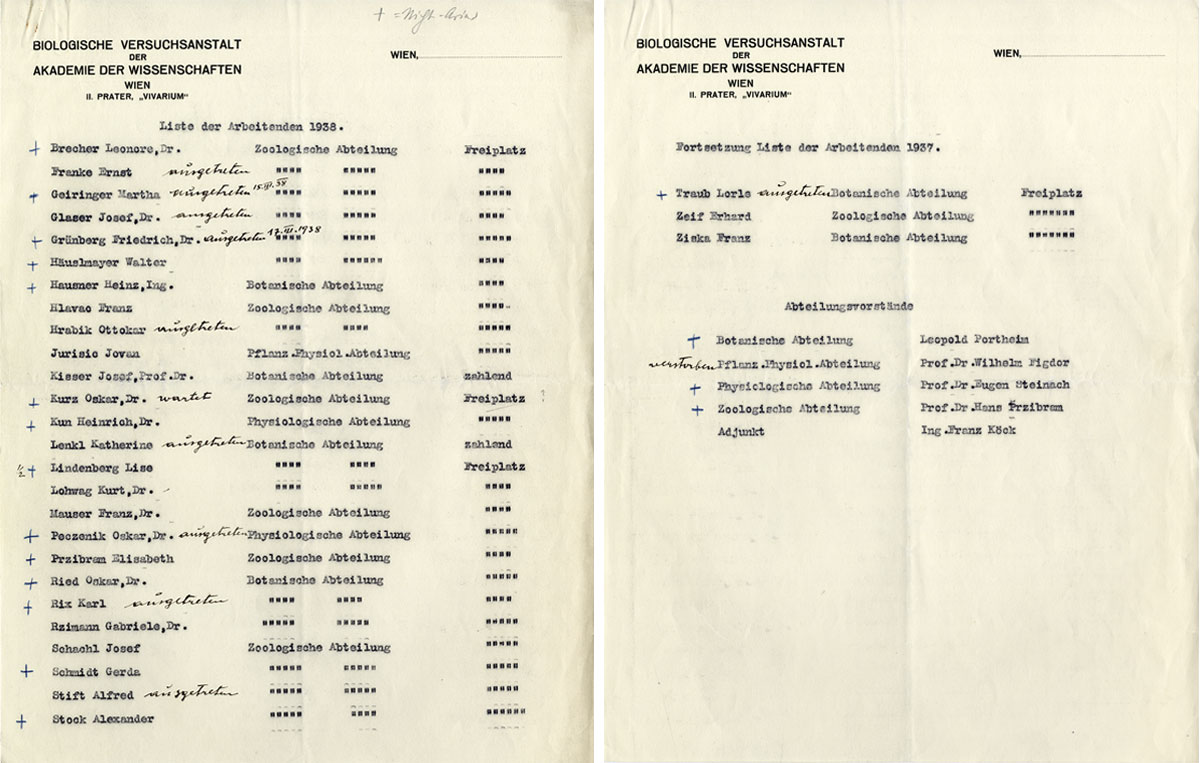
The list of «non-Aryan» researchers and departmental directors of the Institute for Experimental Biology (marked +) in March 1938. This list included two of the founders of the Institute, Leopold von Portheim and Hans Przibram, and one head of department, Eugen Steinach. In total, 18 members were of Jewish descent. They were all required to leave the Institute for Experimental Biology immediately; five researchers left «voluntarily» in March 1938. The Institute lost all of its department heads and two-thirds of its staff within a few weeks. / Archive of the ÖAW
The last that was heard from Hans Przibram was a postcard from Amsterdam dated 21 April 1943, on which he wrote a laconic message to his brother: «Dear Karl! We have been summoned for travel to Theresienstadt […].» A little over one year later, on 20 May 1944, the life of Hans Przibram came to a tragic end: the highly-regarded zoologist of international renown and most generous scientist to sponsor research in Austria died in the Theresienstadt ghetto/concentration camp, probably of malnutrition and exhaustion. His wife Elisabeth, who was also listed as an employee of the Institute for Experimental Biology in March 1938, committed suicide the following day. Przibram’s daughter Marguerite and von Portheim’s son Eduard were also killed by the Nazis (Reiter, 1999, pp. 611–612).
These two were not the only scientists of the BVA to meet their death through the Nazi terror. In May 1942, Helene Jacobi was deported to the Belarusian extermination camp of Maly Trostinec near Minsk and murdered on the day of her arrival. The zoologist Leonore Brecher was another victim. Shortly after the Anschluss she went on an unpaid research trip to Cardiff but had to return to Vienna. On 14 September 1942 she was deported to Maly Trostinec, too, and killed on 18 September, the day of arrival. All that is known of her colleague Martha Geiringer, a doctoral student of Przibram, is that she was deported from Belgium to Auschwitz on 15 January 1943. The physiologist Heinrich Kun, Eugen Steinach’s closest colleague, died in an unknown camp in Yugoslavia. Henriette Burchardt, also employed for several years with Steinach, was deported on 24 September 1942 from Vienna to Theresienstadt and from there to Auschwitz-Birkenau on 23 October 1944. Her precise date of death is unknown. As at least seven researchers of the Institute for Experimental Biology were killed in the Holocaust, it was thus, relative to its size, the research institute in Austria and the German Reich with the most victims of National Socialism (Taschwer et al., 2016, pp. 53–55).
What happened in the meantime with the building of the Institute? In June 1943, the Academy of Sciences in Vienna concluded an agreement with the Kaiser Wilhelm Society which would allow the Kaiser Wilhelm Institute for Cultivated Plant Research to use the Institute’s facilities, greenhouses and gardens for its research. The war meant these plans never came to fruition. And in the end, the building in the Prater returned to what it had been right at the beginning after 1873: a place for the display of fish in glass tanks.
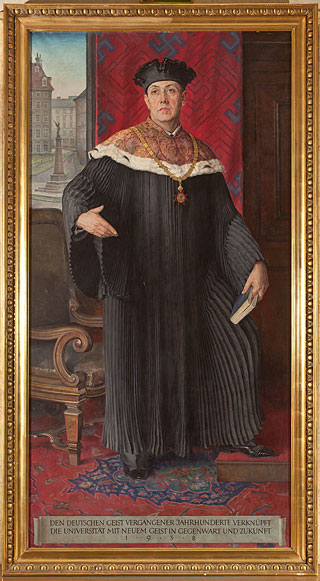
Fritz Knoll, official portrait as Rector of the University of Vienna 1938–1943, in front of a curtain decorated with swastikas. At the University of Vienna, with Knoll serving as rector, 252 professors and lecturers (more than 30 % of the scientific staff) had to take leave in 1938. At no other university have so many scientists been dismissed for racist and – to a lesser extent – political reasons in such a short time. Fritz Knoll, together with Franz Köck, was responsible for the destruction of the Institute for Experimental Biology. / Vienna University Archive. Painting by Ekke Ozlberger (1942)
The total destruction
During the last days of the war in Vienna, the physical destruction of the building itself took place, long after the staff had been forced to leave and the research activities abandoned. According to the eye-witness account of long-standing institute employee Albert Weiser, German combat units (SS and Wehrmacht) were quartered in the Institute for Experimental Biology with heavy armored fighting vehicles from 6 to 9 April 1945 and were responsible for the initial destruction. On 11 April 1945 a fire broke out in several places at the same time in the Institute itself, probably as the result of an incendiary shell, which raged for two days. It was impossible to fight the fire because of the water shortage and, since the Institute was right in the combat area, the heavy shelling (Reiter, 1999, p. 613). What happened afterwards was described in 1947 by the later President of the Austrian Academy of Sciences, Richard Meister: «The building of the Prater Institute for Experimental Biology, II., Hauptallee 1, was destroyed by fire in the last days of the war to such an extent that there was no possibility of restoring it with the Academy’s resources» (Meister, 1947, p. 190).
There is also a paragraph about the work of the Institute for Experimental Biology – but not a word about the fact that no other Academy institute was harder hit by the events of 1938 to 1945. And, needless to say, nothing about the fate of Elisabeth and Hans Przibram, Leopold von Portheim, Eugen Steinach, Helene Jacobi, Leonore Brecher, Henriette Burchard, Martha Geiringer, or Heinrich Kun. In the media, at least, there were protests at the abandonment of the burnt ruins. On 20 October 1948, the newspaper Neues Österreich (Deutsch, 1948) reported resignedly one last time about «the selling of biology» thus: «[…] at the heart of academia, in the traditional home of biology, material and even moral forces appear to have failed. Goodbye Vivarium! […] The Academy of Sciences has sold the building it had received as a gift».
Forgotten, repressed – and finally remembered again
One person who cut out and kept this and other newspaper articles on the Institute for Experimental Biology, and who also collected further material on this research institute before 1938 and after 1945, was Fritz Knoll, who made an astonishing postwar career at the Academy of Sciences despite his Nazi-past. It is possible that the botanist and former Nazi rector of the University of Vienna had a guilty conscience about the complete destruction of the research institute that had been entrusted to him. When he edited two large volumes on «Austrian natural scientists, engineers, and physicians», published in 1950 and 1957 on behalf of the Academy, he had two opportunities to recall the great history of the research institute and to pay tribute to its most important researchers. But the principle of repression was stronger: Knoll did not write a single word about any of them. Instead, Knoll asked several ex-Nazi colleagues for contributions. And some of those important «Austrian scientists» portrayed in the two volumes were prominent Nazis such as Othenio Abel or anatomist Eduard Pernkopf, infamous for his anatomic Atlas and for the possible use of bodies of persons which had been executed by the Nazis (Taschwer, 2015, p. 233).
In contrast, the memory of Hans Przibram, Leopold von Portheim, Wilhelm Figdor, Paul Kammerer, Eugen Steinach and the whole BVA was almost completely erased after 1945 – at least by the Academy. This also becomes evident from the history of the bust of Hans Przibram, which had been created by the academic sculptor André Roder in 1933. In 1947 it was presented to the Academy of Sciences by his brother Karl Przibram and Hans Przibram’s daughter Doris Baumann to commemorate the tragic fate of the founder of the BVA. The Presiding Committee of the Academy decided to «erect the bust in the Academy (in all likelihood in a niche in the Aula)». But no action was taken on this decision for 68 years.
«The memory of the whole Institute was almost completely erased after 1945, at least by the Academy»
As late as in 2015 did the Austrian Academy of Sciences fulfil the wish of Doris Baumann and Karl Przibram for a marker of remembrance for the experimental biologist and scientific patron Hans Przibram. The bust was unveiled in the Aula of the Austrian Academy of Sciences by its President Anton Zeilinger and Mathias Baumann, grandson of Hans Przibram, in a ceremony held on 12 June 2015. On the same day, Zeilinger, Baumann and City Councillor for Cultural Affairs Andreas Mailath-Pokorny also unveiled a plaque to commemorate the Institute for Experimental Biology at its original location in the Prater Hauptallee, attended by 30 descendants of Hans Przibram, Wilhelm Figdor and Leopold von Portheim who had come to the site of the former BVA from all over the world.
References
Deutsch, P. (1948, 20 d’octubre). Die verkaufte Biologie. Neues Österreich, p. 5.
Gliboff, S. (2006). The case of Paul Kammerer: Evolution and experimentation in the early 20th century. Journal of the History of Biology, 39, 525–563. doi: 10.1007/s10739-005-3051-5
Hirschmüller, A. (1991). Paul Kammerer und die Vererbung erworbener Eigenschaften. Medizinhistorisches Journal, 26, 26–77.
Köck, F. (1940, 4 May). Letter (Box 1, Folder 2). Archive of the Austrian Academy of Sciences (AÖAW)
Koestler, A. (1971). The case of the midwife toad. London: Hutchinson.
Logan, Ch. A. (2013). Hormones, heredity, and race: Spectacular failure in interwar Vienna. New Brunswick: Rutgers University Press.
Logan, Ch. A., & Brauckmann, S. (2015). Controlling and culturing diversity: Experimental zoology before World War II and Vienna’s Biologische Versuchsanstalt. Journal of Experimental Zoology Part A: Ecological Genetics and Physiology, 323(4), 211–226. doi: 10.1002/jez.1915
Meister, R. (1947). Geschichte der Akademie der Wissenschaften in Wien 1847–1947. Vienna: Verlag Adolf Holzhausen.
Müller, G. B. (Ed.). (2017). Vivarium. Experimental, Quantitative, and Theoretical Biology at Vienna’s Biologische Versuchsanstalt. Cambridge/London: MIT Press.
Reiter, W. L. (1999). Zerstört und vergessen: Die Biologische Versuchsanstalt und ihre Wissenschaftler/innen. Österreichische Zeitschrift für Geschichtswissenschaften, 10(4), 104–133.
Södersten, P., Crews, D., Logan, Ch., & Soukup, R. W. (2013). Eugen Steinach: The first neuroendocrinologist. Endocrinology, 155(3), 688–695. doi: 10.1210/en.2013-1816
Taschwer, K. (2015). Hochburg des Antisemitismus. Der Niedergang der Universität Wien im 20. Jahrhundert. Vienna: Czernin.
Taschwer, K. (2016). Der Fall Paul Kammerer. Das abenteuerliche Leben des umstrittensten Biologen seiner Zeit. Munich: Hanser.
Taschwer, K., Feichtinger, J., Sienell, S., & Uhl, H. (Eds.). (2016). Experimental biology in the Vienna prater. On the history of the Institute for Experimental Biology 1902 to 1945. Vienna: Verlag der ÖAW.
Walch, S. (2016). Triebe, Reize und Signale. Eugen Steinachs Physiologie der Sexualhormone. Vom biologischen Konzept zum Pharmapräparat, 1894–1938. Vienna: Böhlau.

